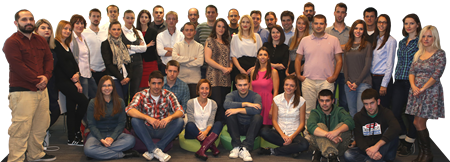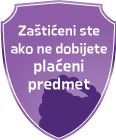Barcsay Gyűjtemény · Szentendre / Mađarska avangarda
| Cena: |
| Stanje: | Polovan bez oštećenja |
| Garancija: | Ne |
| Isporuka: | AKS BEX City Express Pošta CC paket (Pošta) DExpress Post Express Lično preuzimanje |
| Plaćanje: | Tekući račun (pre slanja) Ostalo (pre slanja) Pouzećem Lično |
| Grad: |
Novi Sad, Novi Sad |
Godina izdanja: Ostalo
ISBN: Ostalo
Jezik: Mađarski
Oblast: Slikarstvo
Autor: Strani
odlično
SZERKESZTŐ
Petényi Katalin
GRAFIKUS
Barcsay Jenő
FOTÓZTA
Bánfalvi János
Ifj. Schiller Alfréd
Petrás István
Szentendre
`Petényi Katalin: Barcsay Gyűjtemény - Szentendre ` összes példány
Kiadó: Pest Megyei Múzeumok Igazgatósága
Kiadás helye: Szentendre
Kiadás éve: 1978
Kötés típusa: Ragasztott papírkötés
Oldalszám: 90 oldal
Sorozatcím:
Kötetszám:
Nyelv: Magyar Angol Német Francia Orosz
Méret: 30 cm x 24 cm
potpis
Иванка Живковић (Београд, 22. септембар 1936 — Београд, 11. август 2022) била је српска сликарка и педагог која се највише бавила рестаурацијом, конзервацијом и копирањем фресака.
Jenő Barcsay (14 January 1900 – 2 April 1988) was a Hungarian painter with Armenian ancestry.[1]
Jenő Barcsay
His life
edit
Born in Katona, Hungary in 1900. On his mother`s side, he is a descendant of the noble Armenian Kápdebó family from Transylvania. His mother, Irén Kápdebó, gave birth to ten children, six of them passed away in a very young age. His younger brother, a doctor, died of pneumonia at the age of 24. Although he was a late descendant of a Transylvanian noble family, he grew up in poverty. His father (notary Boldizsár Barcsay ) and one of his sisters suffered from mental illness, and his father later committed suicide.
His father wanted to turn him into a military officer, but he himself preferred to become a musician, taking piano lessons in Marosvásárhely. In the meantime, he was a private tutor in Nyárádszentandrás and obtained a teacher`s and cantor`s certificate. His painting talent was discovered by teacher Károly Gulyás, who recommended him to Sándor Illyés Soófalvy. The rich Transylvanian gentleman undertook the costs of his education in Budapest, but could only support him for one year, because he lost his fortune in the economic crisis after World War I.
In 1918, Barcsay was drafted to the army, but he was discharged due to pneumonia.
In 1919, he went to Budapest to begin his studies in the Fine Art School and graduated in 1924. In 1923 they worked in Gyöngyös; where he created his picture called A falu bolondja (The Village Fool) which actually initiated him as a painter: that`s when he felt the space depicted on the plane, the third dimension combined with the representation of the soul and inner content. After he graduated he stayed at the college as an artist student for two years. During his studies, he had serious financial problems, he was poor, so much so that he hid himself in a room at the school together with several of his friends. His first master was János Vaszary.
In 1925, he made the etching, the Fiúfej (Boy`s Head), which even before the Parisian influences, but already instinctively, with almost cubist tools, breaks down the form, the human face, into planes, and these planes meet in a sharp cut in the portrait.
The summer of 1926 was spent in Makó and Hódmezővásárhely, where he worked on the constructive structural powers in landscapes. The same year he traveled to Paris with a two-year state scholarship. He was discouraged by the modern kitsch he saw in galleries and coffee houses, and his lack of language skills also made his integration difficult. However this was where he discovered the works of Cézanne. His paintings greatly influenced the young artist.
Due to the serious illness and death of his younger brother, he traveled home from Paris, then returned, but could no longer find his place, so he spent the second half of the scholarship period (1929-30) in Italian cities - Perugia, Rome, Assisi and Florence. Here he consciously studied and trained himself, and this trip enriched him with life-long experiences, which he later used in his paintings in the mid-fifties. He always emphasized that he was close to Latin expressionism, not to the German.
While in Italy in 1927, Barcsay learned about the Quattrocento movement of the early Renaissance, particularly the anatomical studies of the period. He became a resident of Szentendre after many visits and embarked on another fellowship to Paris in 1929 to understand the rules of cubism.
He made his first painting with a characteristically individual style, The Working Girl, in 1928, even before his period in Szentendre. In 1929, he joined the Society of Szentendre Painters, founded that year. Although he was not a founding member, from then on he regularly spent his summers in the small town on the Danube, initially in the artist colony, later in his house on Zenta street (his statue can still be seen there, with his characteristic cane). Here he made friends with Jeno Paizs Goebel, whom he soon lost (he died of a brain tumor during World War II).
From 1931 to 1945, he taught accounting, mathematics, mechanics and literature at the Municipal Apprentice School in the capital to bakers, hairdressers, mechanical technicians, etc. for students. He was able to make himself independent from his earnings, he was not forced to paint kitsch.
In 1945, on the recommendation of Emil Krocsák, Szőnyi invited him to the Academy of Fine Arts, where he became a professor of anatomy and visual appearance. The highly respected, aging master, who also drew intensively as a teacher in order to improve his knowledge, was confidentially called only Nyenyo by his students and colleagues. He remained a teacher at the college until his retirement, and after his death one of the halls of the institution was named after him.
Anatomy for the Artist Book Includes detailed drawings of the human body for the fine artist in 142 full page plates. These drawings include bones, muscles, and joints.
Barcsay died in Budapest in 1988. After his death one of the halls of the Fine Art School was named after him.
Jeno Barcsay
International shipping
Paypal only
(Države Balkana: Uplata može i preko pošte ili Western Union-a)
1 euro = 117.5 din
For international buyers please see instructions below:
To buy an item: Click on the red button KUPI ODMAH
Količina: 1 / Isporuka: Pošta / Plaćanje: Tekući račun
To confirm the purchase click on the orange button: Potvrdi kupovinu (After that we will send our paypal details)
To message us for more information: Click on the blue button POŠALJI PORUKU
To see overview of all our items: Click on Svi predmeti člana
Ako je aktivirana opcija besplatna dostava, ona se odnosi samo na slanje kao preporučena tiskovina ili cc paket na teritoriji Srbije.
Poštarina za knjige je u proseku 225 dinara, u slučaju da izaberete opciju plaćanje pre slanja i slanje preko pošte. CC paket je 340 dinara. Postexpress i kurirske službe su skuplje ali imaju opciju plaćanja pouzećem. Ako nije stavljena opcija da je moguće slanje i nekom drugom kurirskom službom pored postexpressa, slobodno kupite knjigu pa nam u poruci napišite koja kurirska služba vam odgovara.
Ukoliko još uvek nemate bar 10 pozitivnih ocena, ili imate negativnih ocena, zbog nekoliko neprijatnih iskustava, molili bi vas da nam uplatite cenu kupljenog predmeta unapred.
Novi Sad lično preuzimanje (pored Kulturne stanice Eđšeg) ili svaki dan ili jednom nedeljno zavisno od lokacije prodatog predmeta (jedan deo predmeta je u Novom Sadu, drugi u kući van grada).
Našu kompletnu ponudu možete videti preko linka
https://www.kupindo.com/Clan/H.C.E/SpisakPredmeta
Ukoliko tražite još neki naslov koji ne možete da nađete pošaljite nam poruku možda ga imamo u magacinu.
Pogledajte i našu ponudu na limundu https://www.limundo.com/Clan/H.C.E/SpisakAukcija
Slobodno pitajte šta vas zanima preko poruka. Preuzimanje moguce u Novom Sadu i Sremskoj Mitrovici uz prethodni dogovor. (Većina knjiga je u Sremskoj Mitrovici, manji broj u Novom Sadu, tako da se najavite nekoliko dana ranije u slucaju ličnog preuzimanja, da bi knjige bile donete, a ako Vam hitno treba neka knjiga za danas ili sutra, obavezno proverite prvo preko poruke da li je u magacinu da ne bi doslo do neprijatnosti). U krajnjem slučaju mogu biti poslate i poštom u Novi Sad i stižu za jedan dan.
U Novom Sadu lično preuzimanje na Grbavici na našoj adresi ili u okolini po dogovoru. Dostava na kućnu adresu u Novom Sadu putem kurira 350 dinara.
Slanje nakon uplate na račun u Erste banci (ukoliko ne želite da plaćate po preuzimanju). Poštarina za jednu knjigu, zavisno od njene težine (do 2 kg), može biti od 170-264 din. Slanje vise knjiga u paketu težem od 2 kg 340-450 din. Za cene postexpressa ili drugih službi se možete informisati na njihovim sajtovima.
http://www.postexpress.rs/struktura/lat/cenovnik/cenovnik-unutrasnji-saobracaj.asp
INOSTRANSTVO: Šaljem po dogovoru, ili po vašim prijateljima/rodbini ili poštom. U Beč idem jednom godišnje pa ako se podudare termini knjige mogu doneti lično. Skuplje pakete mogu poslati i po nekom autobusu, molim vas ne tražite mi da šaljem autobusima knjige manje vrednosti jer mi odlazak na autobusku stanicu i čekanje prevoza pravi veći problem nego što bi koštala poštarina za slanje kao mali paket preko pošte.
Ukoliko kupujete više od jedne knjige javite se porukom možda Vam mogu dati određeni popust na neke naslove.
Sve knjige su detaljno uslikane, ako Vas još nešto interesuje slobodno pitajte porukom. Reklamacije primamo samo ukoliko nam prvo pošaljete knjigu nazad da vidim u čemu je problem pa nakon toga vraćamo novac. Jednom smo prevareni od strane člana koji nam je vratio potpuno drugu knjigu od one koju smo mu mi poslali, tako da više ne vraćamo novac pre nego što vidimo da li se radi o našoj knjizi.
Ukoliko Vam neka pošiljka ne stigne za dva ili tri dana, odmah nas kontaktirajte za broj pošiljke kako bi videli u čemu je problem. Ne čekajte da prođe više vremena, pogotovo ako ste iz inostranstva, jer nakon određenog vremena pošiljke se vraćaju pošiljaocu, tako da bi morali da platimo troškove povratka i ponovnog slanja. Potvrde o slanju čuvamo do 10 dana. U 99% slučajeva sve prolazi glatko, ali nikad se ne zna.
Ukoliko uvažimo vašu reklamaciju ne snosimo troškove poštarine, osim kada je očigledno naša greška u pitanju.
Predmet: 81792309













